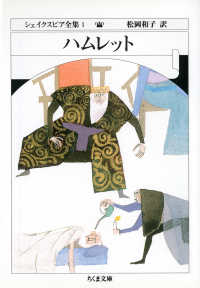- ホーム
- > 洋書
- > 英文書
- > History / World
Full Description
Thomas Jefferson's Enlightenment: English, Scottish and French Influences on the Third US President retraces Jefferson's intellectual history. His education in rural Virginia exposed him first to the Latin and Greek classics, then to the political and legal thought of opposition ('country') Whigs from 18th-century England. From his college days, he started to absorb the quite distinct views of the Scottish Enlightenment then the five years he spent in Paris (1784-1789), mostly as American Minister to France, broadened his horizons even more. An enthusiastic amateur scientist, he studied the latest science and liberal politics of his French circle, the most important being the Marquis de Condorcet, whose revolutionary 'social mathematics' was 200 years ahead of its time. The English, Scottish and French perspectives Jefferson was exposed to shaped his thinking in many ways on his return to the US, influencing his own promotion of science as president of the American Philosophical Society and agricultural improver. It shaped his unique views on religion and ethics, up to his very last published letter. However, it failed to eradicate his great blind spot in regard to slavery as the only enslaved people he freed were from his own family.
Contents
List of Tables
Acknowledgments
Thomas Jefferson: A Chronology
Introduction
Part One: England
Chapter One: 'I cannot live without books'
Chapter Two: A country Whig in Williamsburg: the education of Thomas Jefferson
Part Two: Scotland
Chapter Three: The Scottish Enlightenment comes to Virginia
Chapter Four: Declaring independence and religious freedom the Scottish way
Part Three: France
Chapter Five: A Virginian in Paris
Chapter Six: Jefferson in the salons of Paris: a deeper dive
Chapter Seven: The social mathematics of the Marquis de Condorcet
Part Four: Monticello
Chapter Eight: The Room where it happened: the conflict between two paragons of the American Enlightenment
Chapter Nine: The climax of the American enlightenment: the Danbury Baptists, the 'Jefferson Bible', and Jefferson's last letter
Chapter Ten: The General Spread of the Light of Science
Conclusion
Author's Note
Bibliography
About the Author








